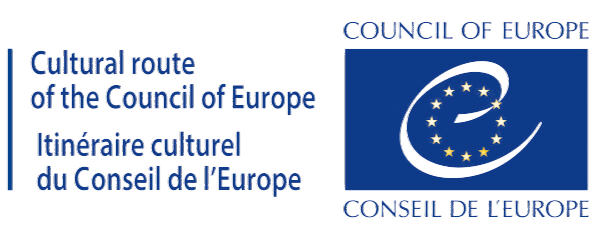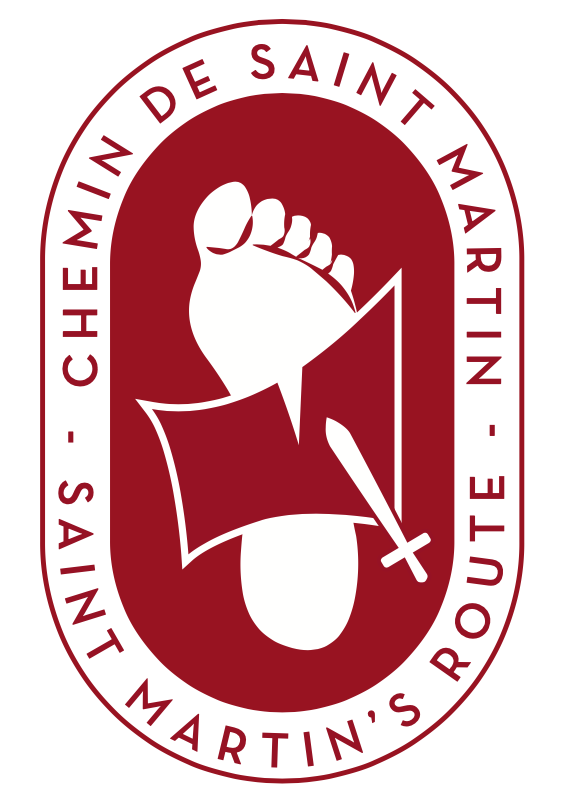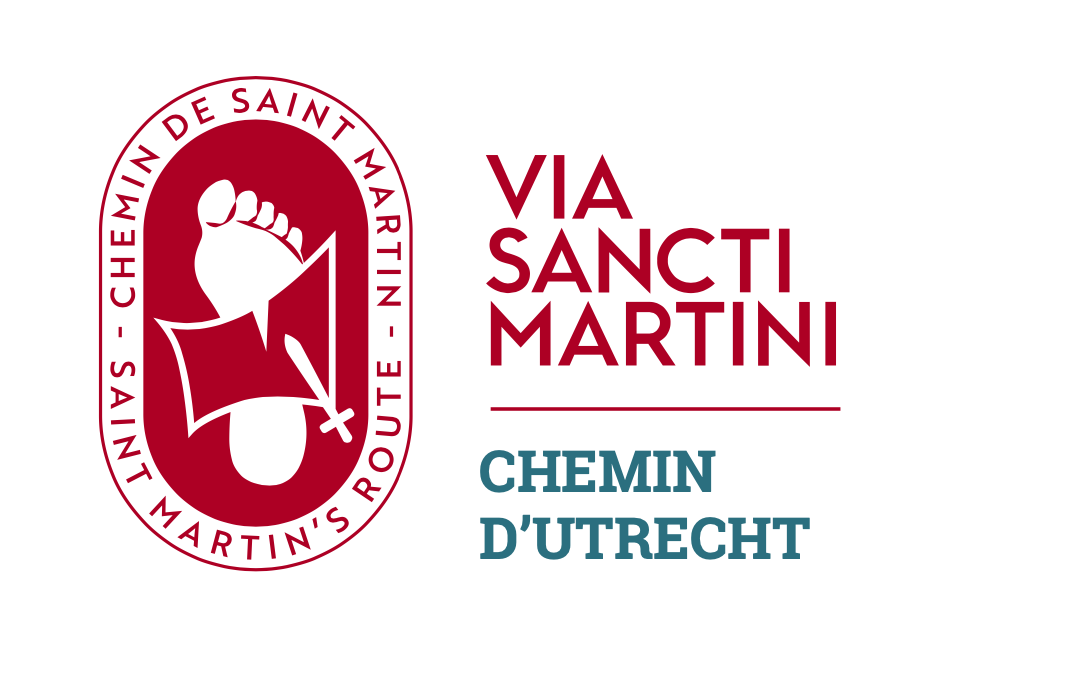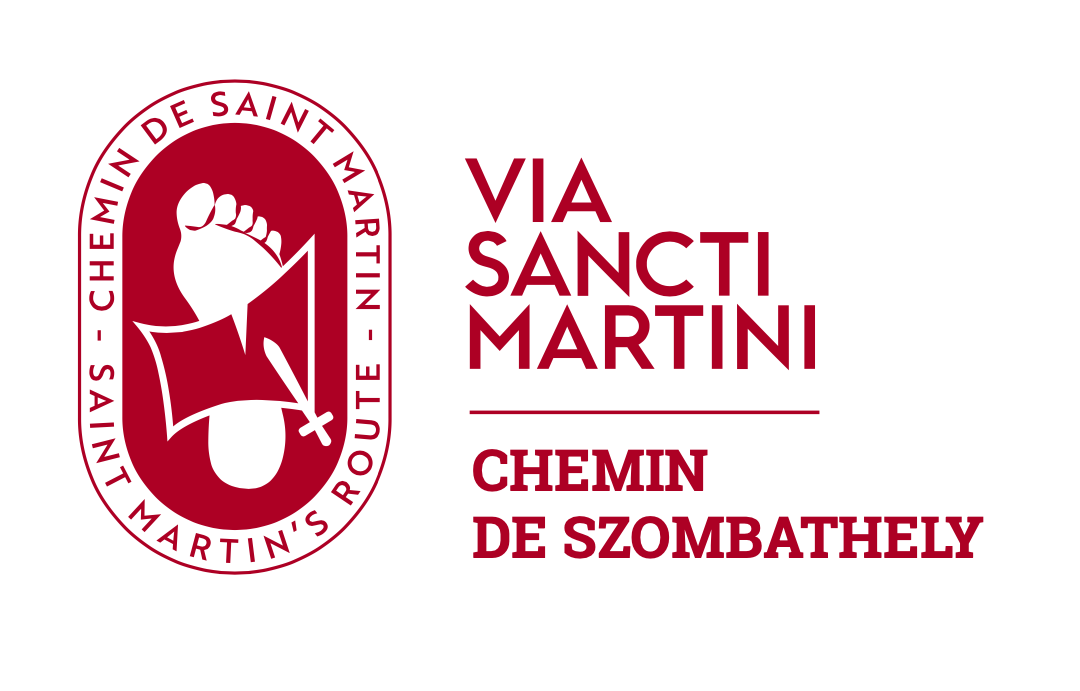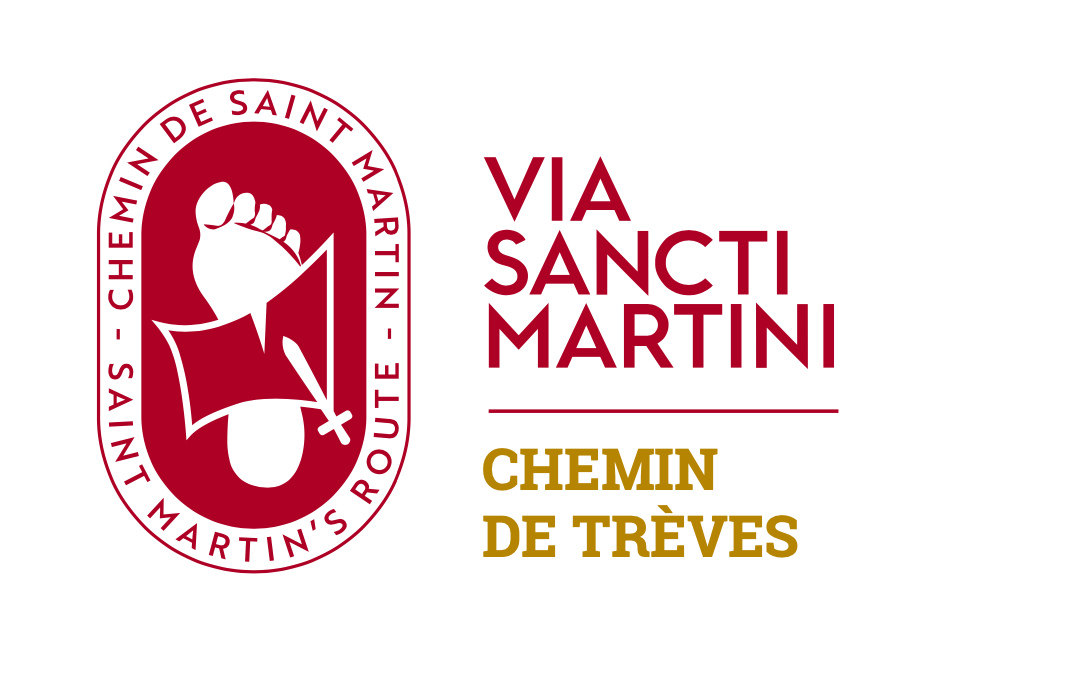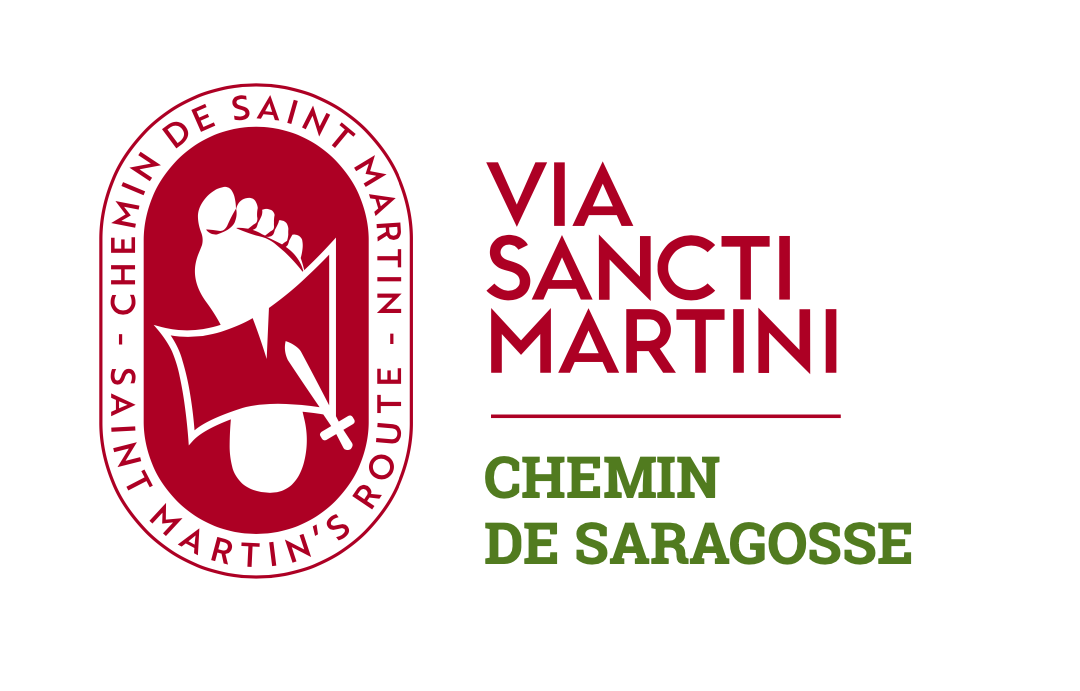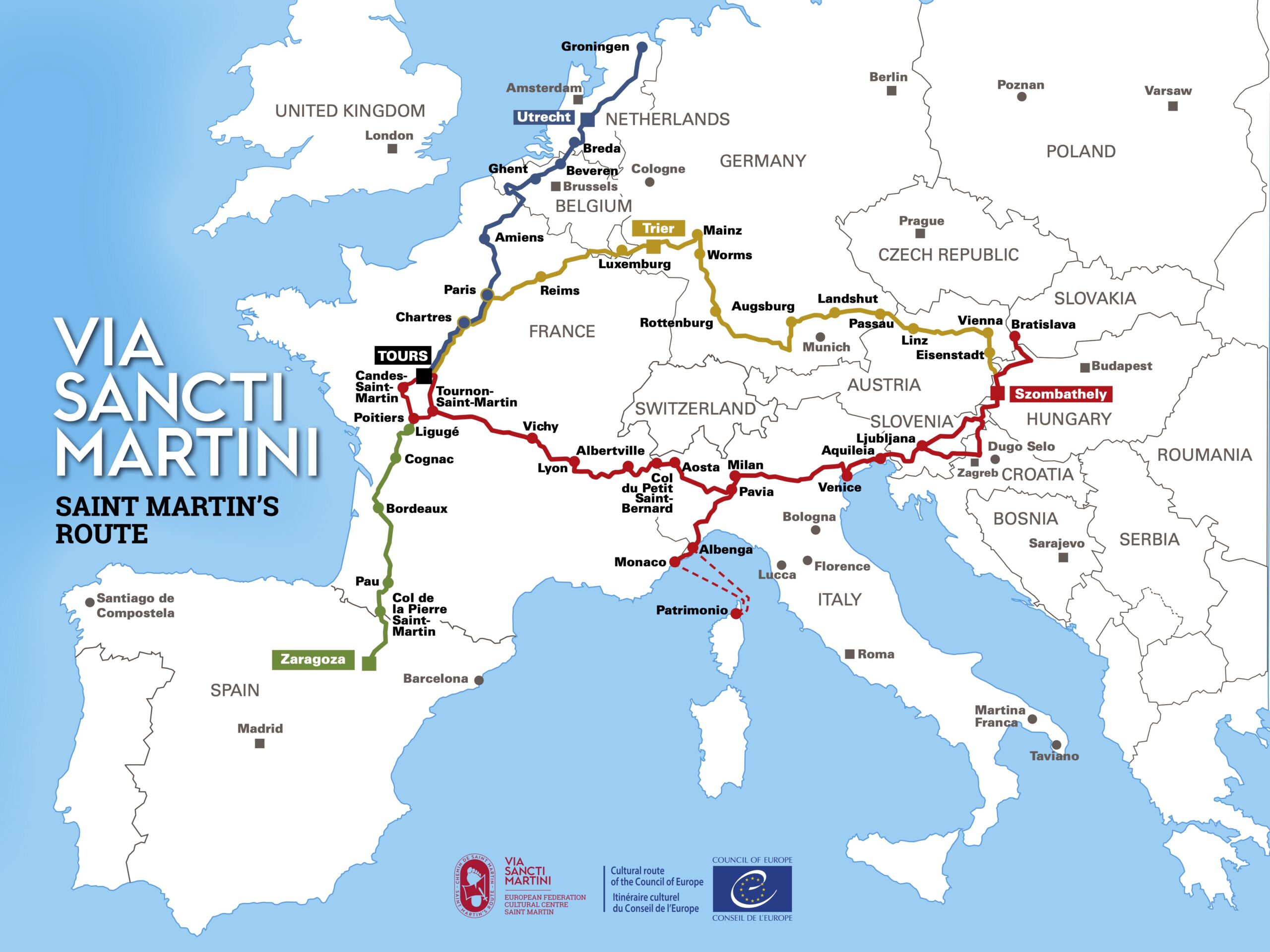SAINT MARTIN’S ROUTES
Via Sancti Martini in Europe
The European Cultural Route « Saint Martin of Tours, a European figure, symbol of sharing, common value » connects European cities that shared the life of Saint Martin in the 4th century: Szombathely, Pannonhalma, Pavia, Siccomario, Milan, Rome, Albenga, Amiens, Worms, Poitiers, Ligugé, Tours, Trier, Luxembourg, Paris… Additionally, it links major European cities with significant architectural heritage related to the cult of Saint Martin of Tours:
- Cathedrals in Mainz, Eisenstadt, Bratislava, Lucca, Orense, Ypres, Groningen, Utrecht…
- Monasteries in Naples, Pannonhalma, Canigou, Palermo, Santiago de Compostela…
Saint Martin is still very much alive today in regions of Germany, France, Italy, Hungary, Slovenia, Spain… He is a historical figure and a « European hero of legend and folklore. » Martin is by far the most common surname in Europe and a frequently chosen first name. His feast day, November 11, is still celebrated with many festivities in Europe: eating goose, tasting new wine, as well as popular events like the Saint Martin fair, children’s lantern parades…
VIA SANCTI MARTINI IN EUROPE
Via Sancti Martini makes it possible to rediscover a major cultural heritage long forgotten. Vectors of cultural, social, sustainable and citizen tourism, the paths of Saint Martin de Tours relate episodes of his life. All routes start from Tours and are passable in both directions.
- the Szombathely route (Hungaria, 2500 km) connects its childhood town, Szombathely, (Hungary) with Tours,
- the Zaragoza route (Spain,1100 km) reminds us that it went to a Council in Zaragoza,
- the Trier route (1100 km) tells us that Saint Martin went to Trier several times to meet the emperors.
- the Utrecht route (Netherlands, 1100 km) highlights a Dutch town totally dedicated to the bishop of Tours. It extends to Groningen (Saint Martin Cathedral).
